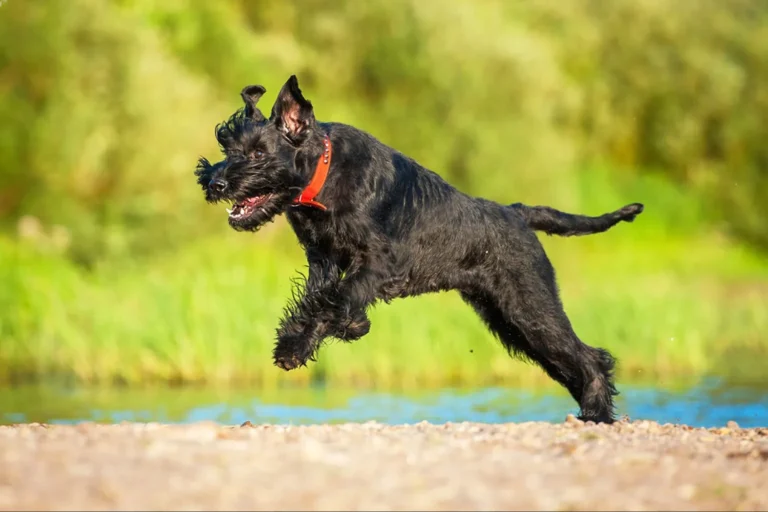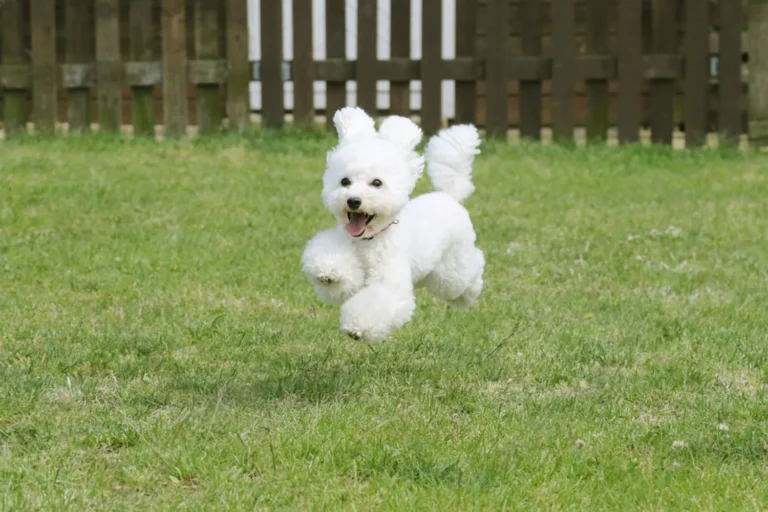
The Nova Scotia Duck Tolling Retriever, or Toller, is the kind of dog that turns ordinary days into little adventures. They’ve got this foxy, copper red coat and bright, mischievous eyes that say “What’s next?” and they mean it. Affectionate and playful doesn’t even begin to cover it. These dogs were bred to lure and retrieve waterfowl, so they’re natural entertainers darting and splashing along the shoreline to pique a duck’s curiosity. I once tossed a tennis ball near a lake and watched a friend’s Toller launch himself like a furry torpedo, then swim back grinning, ready to do it again (and again). Keep a towel by the door trust me.
Because they’re smart and energetic, Tollers do best with plenty of exercise and mental games. A good fetch session, a hike, or a few rounds of hide and seek with their favorite toy will make them glow. Mine loves puzzle feeders; you can almost see the gears turning. They learn quickly with positive training, though they can be a bit vocal when excited that famous “Toller scream” is real and hilarious in the right context. Teach a “quiet” cue early and you’ll be golden. Expect some shedding, especially seasonally, and a dog who bonds closely with family but may act a touch reserved with strangers at first. Socialize young, keep their brain busy, and you’ll have a cheerful, loyal sidekick who’s equally happy conquering a trail or curling up at your feet while you tell them they’re the best dog in the world because they kind of are.
History and Origin of the Nova Scotia Duck Tolling Retriever
The Nova Scotia Duck Tolling Retriever has a backstory as clever as the dogs themselves. Their signature skill, “tolling,” comes from the Middle English word “tollen,” meaning to lure or entice. That’s exactly what these red coated dynamos were bred to do: dance along the shoreline with playful, fox like energy to draw curious ducks closer. I remember the first time I watched a Toller work from a blind tail flagging, splashing just enough, darting after a tossed stick it felt like watching a little magician set the stage.
This technique took its cues from nature. In what’s now Canada, the Mi’kmaq Indigenous peoples noticed foxes cavorting along the water’s edge. The antics piqued the interest of waterfowl, who paddled in to get a better look. Hunters recognized the brilliance in that moment of curiosity and encouraged their dogs to mimic the trick. A seasoned waterfowler I met near a marsh once showed me how they’d toss small bits of driftwood into the shallows to keep a young Toller moving, flashing its white markings and tail just enough to hold a duck’s attention.
By the 19th century, locals were intentionally shaping a dog that could both lure and retrieve. They blended the best qualities of nearby working dogs with retrievers, Cocker Spaniels, Irish Setters, and possibly farm collies. The retrievers brought soft mouths and a love of water; spaniels added merry, quick footed animation; setters contributed style and stamina; and farm collies likely lent brainy, biddable focus. A breeder I spoke with in Nova Scotia swore you can still see that collie like quick thinking when a Toller problem solves on the fly. The result was a compact, fiery worker initially known as the Little River Duck Dog.
In 1945, the Canadian Kennel Club formally recognized the breed and gave it the name we know today: the Nova Scotia Duck Tolling Retriever. Recognition by the American Kennel Club followed in the 1980s, and the Toller’s reputation spread far beyond its coastal hunting grounds. It’s a long way from small town marshes to national show rings, but these dogs never lost that spark.
Even if you don’t hunt, you can appreciate the tradition. I like to play a “tolling game” at the lake toss a light bumper along the shoreline and let the dog zigzag, chase, and splash while I stay low and quiet. It’s part fetch, part theater, and a great mental workout. And yes, that fluffy tail still waves like a little flag, an echo of the old days when curiosity brought ducks and now, more often, smiling onlookers just a bit closer.
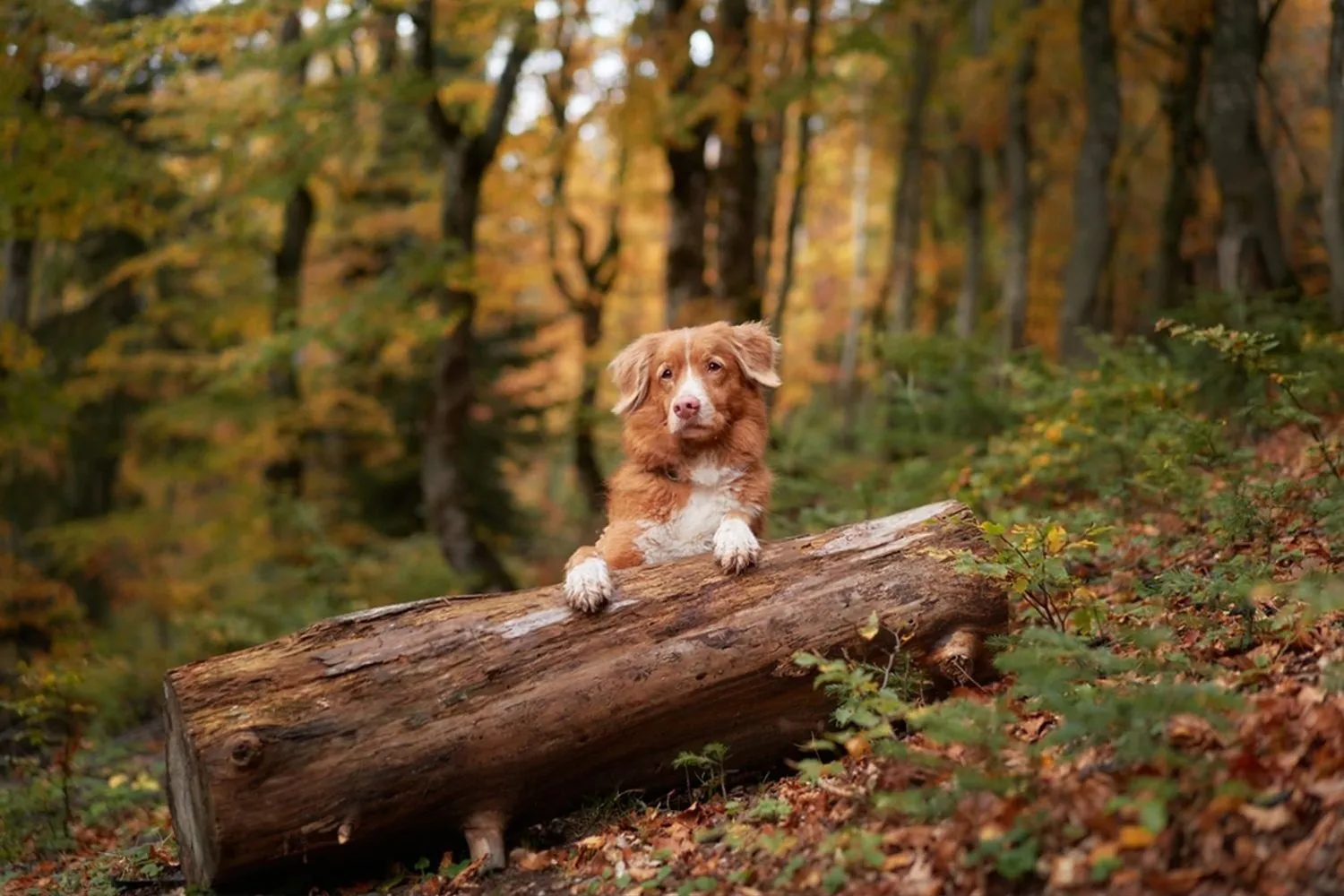
What Is a Nova Scotia Duck Tolling Retriever?
If you’ve ever spotted a medium sized dog with a golden red coat that seems to glow in the sun, a splash of white on the chest or paws, and bright almond eyes that miss nothing there’s a good chance you met a Toller. I remember the first time I saw one at a lakeside park; people kept asking, “Is that a tiny Golden?” while the dog trotted around like it owned the shoreline. Tollers have this mix of beauty and purpose that turns heads. They’re as captivating for their keen, alert expression and fox like grace as they are for that spirited, ready for action vibe.
These dogs are born retrievers with serious get up and go. If your idea of a good day includes hiking a wooded trail, tossing a bumper into the water, or trying a new dog sport, a Toller will be right there, thrilled to be your partner. They’re bright sometimes a little too bright so they need more than just a stroll around the block. Think daily fetch sessions, swims if you’ve got access to water, and short training bursts to keep their minds busy. I like to rotate games: a round of retrieval, a few minutes of scent work with hidden treats, and then a puzzle toy for wind down time. Give them room and a “job,” and you’ll see them flourish.
Personality wise, Tollers are friendly and outgoing, though they’ve got a few quirky edges. They’re usually polite with new people rather than wildly over the top, and they can be just a tad stubborn when they’ve decided the game should be played their way. My friend’s Toller, Maple, once “negotiated” a recall by grabbing the ball first “I’ll come back, but I’m taking this with me.” The trick is training that’s fun and fair: short sessions, varied rewards (treats, toys, praise), and plenty of early socialization so they learn that the world is a friendly, manageable place. When they understand what you’re asking and why, they’re incredibly biddable; when they’re bored, they’ll invent their own entertainment.
Living with a Toller is all about balance. They’re active by day and snuggly by evening if their exercise cup is filled. They do best with space to move or a family committed to daily activity, and they shine in dog sports like agility and dock jumping. Plan on regular brushing for that glorious coat, especially during seasonal shedding. If you’re hoping for a couch potato, this might not be your match. But if you want a clever, athletic companion who will keep you laughing, nudge you outside, and curl up at your feet after a good adventure, a Nova Scotia Duck Tolling Retriever can become a cherished member of the family in no time.
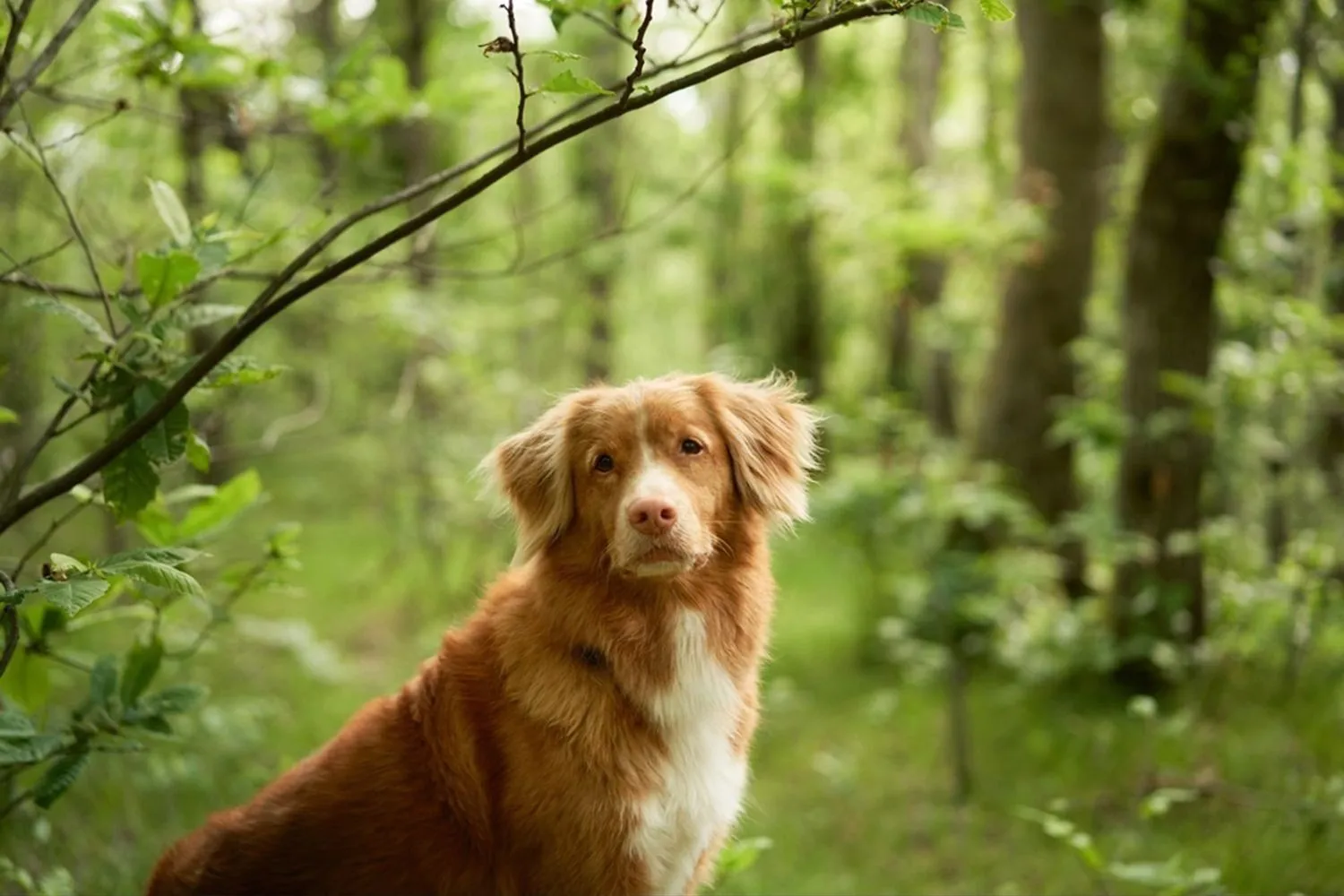
Who Is a Nova Scotia Duck Tolling Retriever Best For?
If your ideal day includes lacing up your shoes and heading outside rain or shine a Toller will fit right into your life. These dogs are in their element when there’s room to run, water to splash through, and something to chase (even if it’s just a rogue leaf on a breezy day). I used to meet a Toller named Maple on the trail by the river, and she’d do joyous zoomies between puddles, then drop a frisbee at my feet with this “Again?” look that was impossible to resist. Flyball, frisbee, long hikes, casual jogs this is their happy place.
Because they pack a lot of go go go into a medium sized body, Tollers need more exercise than many breeds, plus a healthy dose of brain work. Think: puzzle feeders at breakfast, a sniffari walk at lunchtime, and a training game or two in the evening. A yard or a spacious environment makes life easier, but what matters most is that you can match their energy with daily physical and mental stimulation. If you’re outdoorsy, active, and consistent, you’ll have a very content companion.
They’re also a wonderful fit for families who enjoy playtime as much as cuddle time. Tollers thrive on the joyful chaos of kids tossing balls and playing tag in the yard. I’ve seen a friend’s Toller, Cedar, become the unofficial “tennis ball manager” for her two boys he’d collect lost balls from under the bushes and drop them right into their hands like a pro. They tend to get along well with other dogs, but remember their hunting heritage. Small pets like cats or rabbits can trigger their chase instinct. Careful, slow introductions, management tools like baby gates, and never letting them practice chasing indoors are smart moves. A solid recall, practiced on a long line, goes a long way outside.
Training and socialization are non negotiable with this breed. They’re highly intelligent and quick to learn, but that clever streak can come with a side of stubborn. Keep sessions short, upbeat, and reward based, and you’ll see the lightbulb moments come fast. I like to rotate “jobs” throughout the week: one day it’s basic obedience, the next it’s trick training or a scent game with hidden treats. Early, positive exposure to new people, dogs, and environments helps channel their enthusiasm into confident, polite behavior.
In short, Tollers shine with active owners who enjoy the outdoors, families who love to play, and people ready to invest in training and daily enrichment. If that sounds like you, get ready for a bright eyed partner who’s all in for the next adventure frisbee in mouth and tail wagging like a metronome.

Nova Scotia Duck Tolling Retriever Grooming & Shedding
That gorgeous, water repellent double coat is part of a Toller’s charm, and it really shines with consistent upkeep. A solid once a week brushing with a slicker or pin brush keeps the outer coat glossy and lifts out loose undercoat. When shedding season hits (usually spring and fall), be ready to step it up short, frequent brushing sessions can make a big difference. I helped my neighbor’s Toller, Maple, through her spring “blow,” and a gentle undercoat rake plus a lint roller saved my couch and my sanity.
Pay special attention to tangle prone spots: behind the ears, the feathering on the tail and “britches,” under the collar, and the armpits. Those areas can knot quickly, especially after a romp in brush or a dip in the lake. I like to run a metal comb through after brushing to catch sneaky mats; a little detangling spray and patience go a long way. Keep trims tidy on the feet and stray feathers, but don’t shave a Toller’s double coat it helps regulate temperature and repels water. After swims, give them a fresh water rinse and dry thoroughly, including a gentle towel dry around the ears to help prevent irritation.
Don’t forget the basics: brush those teeth regularly (daily if you can, a few times a week at minimum) with dog safe toothpaste, and keep nails trimmed every 2-4 weeks so they’re not clicking on the floor. I keep a nail grinder handy for a smooth finish and take treat breaks to make it feel like a spa day. A quick paw check, a cuddle, and you’re done your Toller will look great and feel even better.
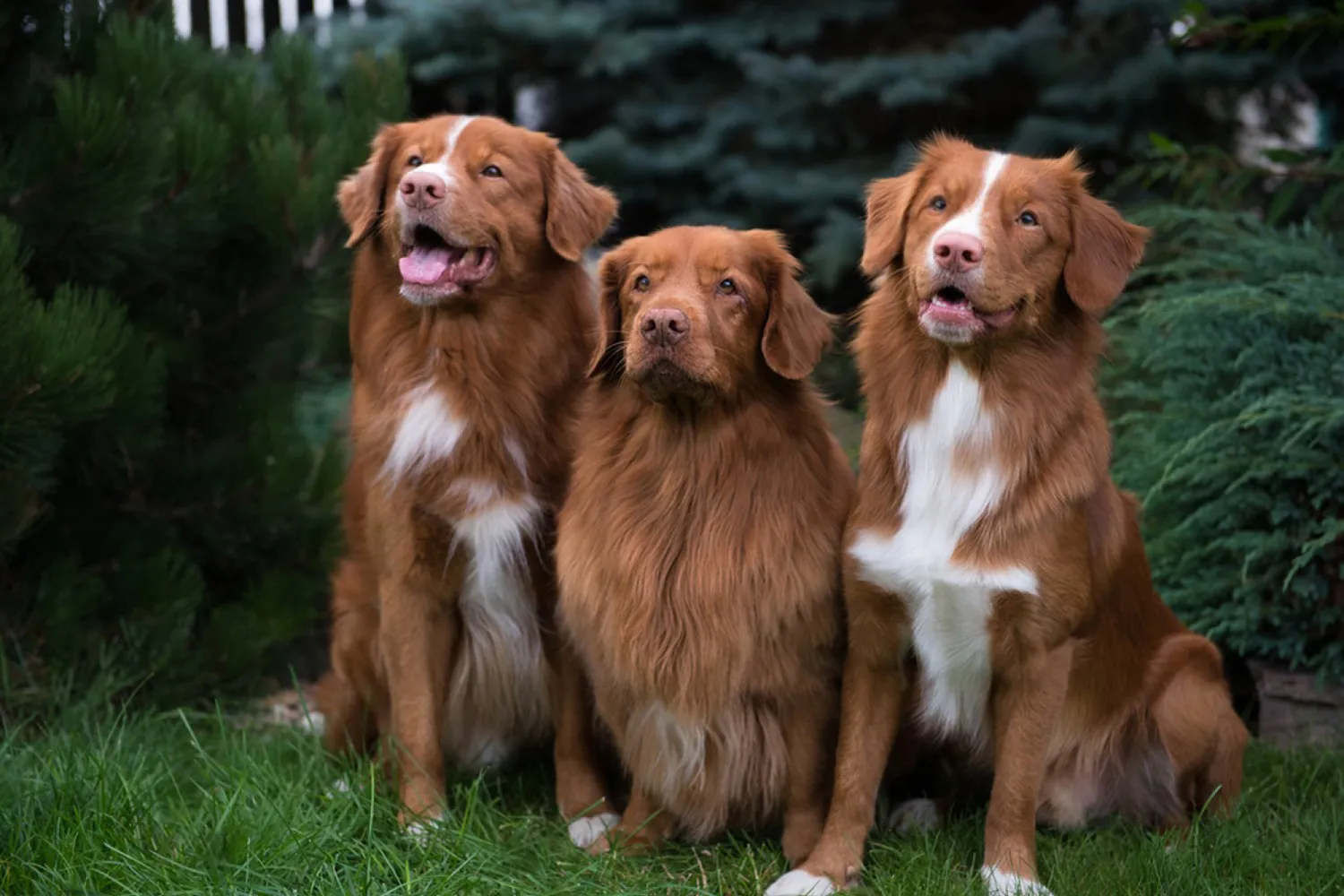
Do Nova Scotia Duck Tolling Retrievers bark a lot?
Tollers definitely have a voice, and they’re not shy about using it. Their bark is sharp and high pitched, and while they’re only moderately vocal day to day, the moments they do chime in can feel… dramatic. Excitement or frustration often comes out as quick yelps think “Hurry up, human!” or “Why is the ball in there and not out here?” And then there’s the infamous Toller scream. The first time I heard it, a duck fluttered past and my friend’s Toller let loose a sound that made the neighbors text, “Is everyone okay?” It’s part of their heritage these dogs were bred to lure and flush waterfowl so birds and small critters can flip that “must announce this!” switch.
If you live in an apartment or a noise sensitive building, it’s manageable but you’ll want a plan. Give them a real job every day: solid exercise, sniffy walks, and brain work like puzzle feeders or scent games help cut down on frustration yelps. Teach a reliable “quiet” by calmly marking and rewarding those tiny moments of silence after a bark, and manage triggers frosted window film for squirrel TV, closing curtains at dawn and dusk when birds are busiest, a white noise machine by the door. I also practice calm greeting routines so excitement doesn’t boil over when the leash appears. One trick that helped me: before opening the door, I wait for three seconds of silence, then we go quiet earns the good stuff. With consistency, you can channel that Toller voice into something you both can live with.

Average Weight and Height of the Nova Scotia Duck Tolling Retriever
Tollers pack a lot of spark into a medium sized frame, and they’re actually the smallest of the retrievers. Most adults stand about 43-53 cm at the shoulder (roughly 17-21 inches) and weigh between 14-23 kg (about 31-50 pounds). Females are usually a touch shorter and lighter than males, which you’ll notice if you’ve ever seen a pair side by side at the park.
In my experience, they’re compact but surprisingly solid one of those breeds that feels heavier than they look when they climb into your lap. My friend’s Toller, Maple, hovers around 48 cm and 18 kg, the perfect size for both city living and weekend hikes. Their fluffy coat can make them look larger in photos, but don’t be fooled under the fur is a lean, athletic dog built for action.
If you’re checking your Toller’s size and condition at home, measure height at the withers (the top of the shoulders) and aim for a trim outline: you should feel ribs without pressing hard and see a slight waist from above. I like to do quick weigh ins at the vet’s lobby scale and keep notes handy for catching sneaky holiday weight gain. Most Tollers hit close to their adult height by around a year, then fill out a bit more as they mature. Keeping them fit, not fluffy, makes all the difference in their energy and joint health.
https://en.wikipedia.org/wiki/Nova_Scotia_Duck_Tolling_Retriever

Are Nova Scotia Duck Tolling Retrievers Easy to Train?
Tollers are wonderfully curious and gentle, but they’ve got a stubborn streak that can turn training into a bit of a negotiation. I always joke that a Toller’s favorite question is, “What’s in it for me?” The good news is they’re smart and respond beautifully to rewards based training. Treats, toys, praise mix it up and you’ll see those clever little gears turning. One Toller I worked with wouldn’t offer a sit until I pulled out a squeaky ball; then suddenly he was a model student. They’re not being difficult just to be difficult they’re just very motivated by fun.
Keep sessions short and upbeat think 5-10 minutes, a few times a day. I like to start with a quick game of fetch to burn off the fizzy energy, then slip in a few cues and end with another game. Clicker training can be magic with this breed, and training through play (retrieve, tug, hide and seek) keeps them engaged. Start early, be consistent, and practice around distractions, because Tollers are easily excited by movement. Teach impulse control basics like wait, leave it, and settle. Skip harsh corrections; they shut down or get cheeky. With patience, variety, and plenty of fun, you’ll have a Toller who learns fast and actually enjoys the process.
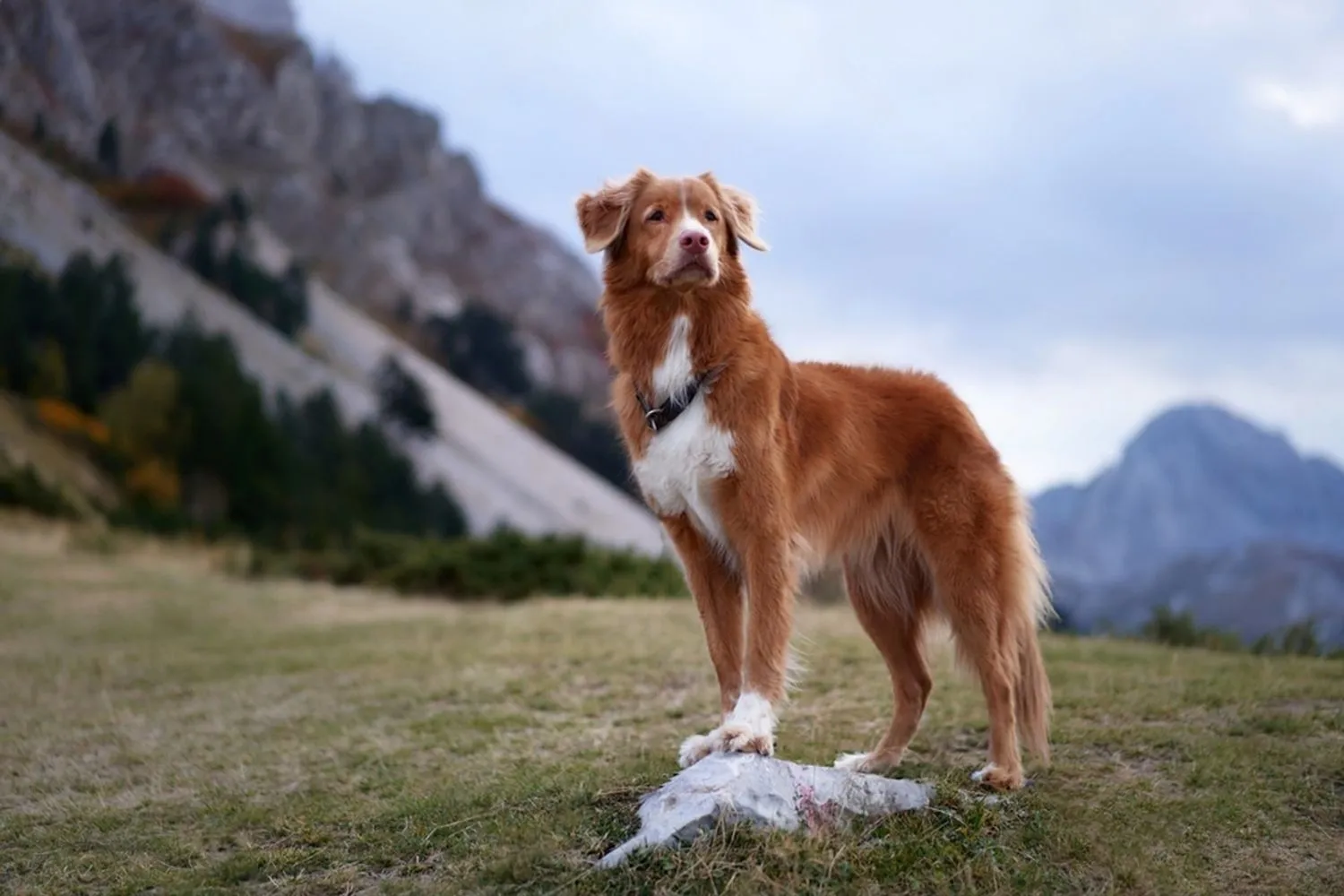
How Do Nova Scotia Duck Tolling Retrievers Behave? Temperament and Personality
Spend five minutes with a Nova Scotia Duck Tolling Retriever and you’ll see why people describe them as a blend of a Golden Retriever’s sunshine and a terrier’s spark. They’re extremely intelligent, delightfully curious, and just independent enough to keep you on your toes. Tollers tend to be outgoing and upbeat, with an energetic, “what’s next?” attitude that makes even a rainy Tuesday feel like an adventure waiting to happen.
Around family, they’re famously gentle especially with kids. I remember my niece dropping a trail of crackers and the Toller I was watching tiptoeing behind her like he was defusing a bomb, carefully snacking only what landed on the floor. They’re affectionate, loyal shadows who love to be part of the action, but they also read the room well. Rowdy in the backyard, soft and careful in the living room. As always, I teach little ones to pet kindly and give the dog a comfy spot to retreat to, and the harmony is lovely.
That big brain needs a job. Training a Toller is fun because they learn fast, but the independent streak means you should keep sessions short, upbeat, and varied. I rotate between retrieve games, scent work, and puzzle toys hide and seek with a favorite bumper is a hit. A trainer I met in Nova Scotia laughed that her Tollers get bored before the humans do, so switch it up and you’ll have a star pupil. They’re highly aware of their surroundings too, which makes them good little watchdogs more “Hey, I noticed something!” than anything serious. And yes, when really excited, some will let out that unmistakable Toller yodel; I warn neighbors before dock diving days.
They adapt well to new places mine took bustling farmers markets in stride after a bit of socialization and they thrive with regular exercise and mental stimulation. If you’re looking for a dog that truly embodies “best friend,” a Toller fits the bill: loyal, joyful, and always ready to join your plans, whether it’s a trail run, a lake swim, or a cozy movie night with a squeaky toy as the co star.
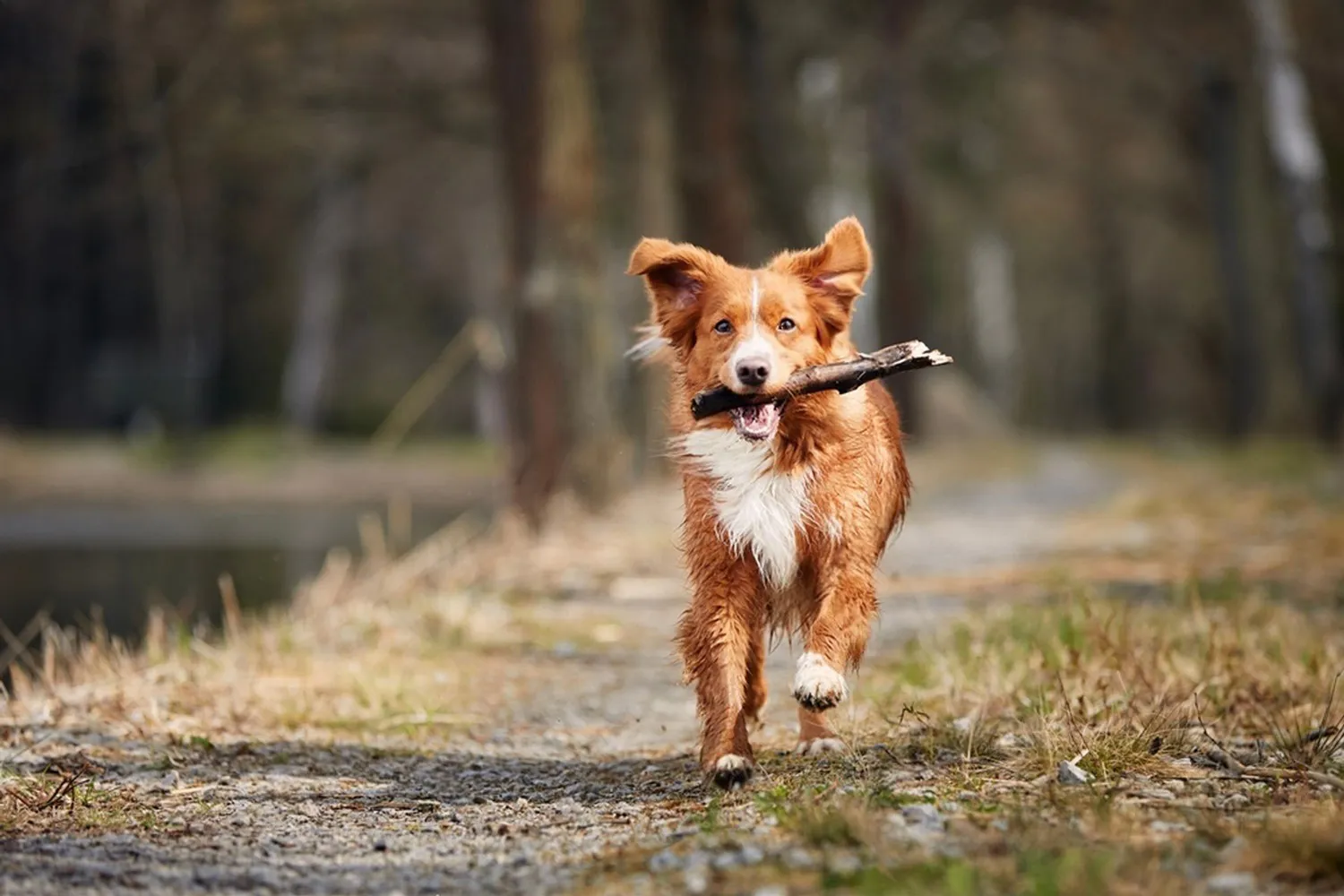
Do Nova Scotia Duck Tolling Retrievers have common health issues?
Tollers are a hardy, energetic breed, but like all purebreds, they can be prone to a few hereditary health issues. Knowing what to watch for doesn’t mean living in worry it just means you’re prepared. I always say that a little vigilance and a good relationship with your vet go a long way.
Addison’s disease is one to keep on your radar. It happens when the adrenal glands don’t produce enough steroid hormones. The tricky part is that symptoms can be vague: low energy, muscle weakness, tummy troubles, or just “off” days that come and go. A friend’s Toller had repeat bouts of vomiting and seemed unusually tired after playtime; routine bloodwork pointed the vet in the right direction, and early treatment made a world of difference. With proper management and regular check-ins, dogs with Addison’s can live happy, full lives.
Hip dysplasia is another concern. It’s a genetic malformation of the hip joint that can lead to pain or arthritis over time. What I look for are signs like stiffness after a long nap, reluctance to jump into the car, or that bunny hop run. Keeping a Toller lean is one of the best things you can do extra weight is hard on joints. I’m a big fan of low impact exercise like swimming, and I use ramps for the car and a comfy orthopedic bed. If your pup shows any discomfort, talk to your vet about early screening and management options.
Eye health is worth consistent attention, too. Collie Eye Anomaly affects the development of blood vessels in the eye and can lead to vision problems, even blindness in severe cases. Progressive Retinal Atrophy is a separate condition that slowly degenerates the retina, often starting with night vision loss. I once fostered a Toller who started bumping into the coffee table at dusk that subtle change led us to an eye exam and a PRA diagnosis. Keeping furniture in predictable places and using night lights can help dogs adjust, but the real key is catching issues early with regular eye screenings by a veterinary ophthalmologist.
For peace of mind, build a routine: annual vet visits, baseline bloodwork when recommended, and prompt checks if your dog seems “not quite right.” Pet insurance has saved me a few surprises, too worth considering with an active, clever breed like the Toller.
If you’re working with a breeder, ask about health testing. Responsible Toller breeders typically do a hip evaluation, a cardiac exam, an ophthalmologist evaluation, and a juvenile Addison’s disease DNA test. Don’t be shy about asking to see results good breeders are proud to share them. With informed care and early detection, Tollers can thrive and keep that trademark sparkle in their eyes for years.
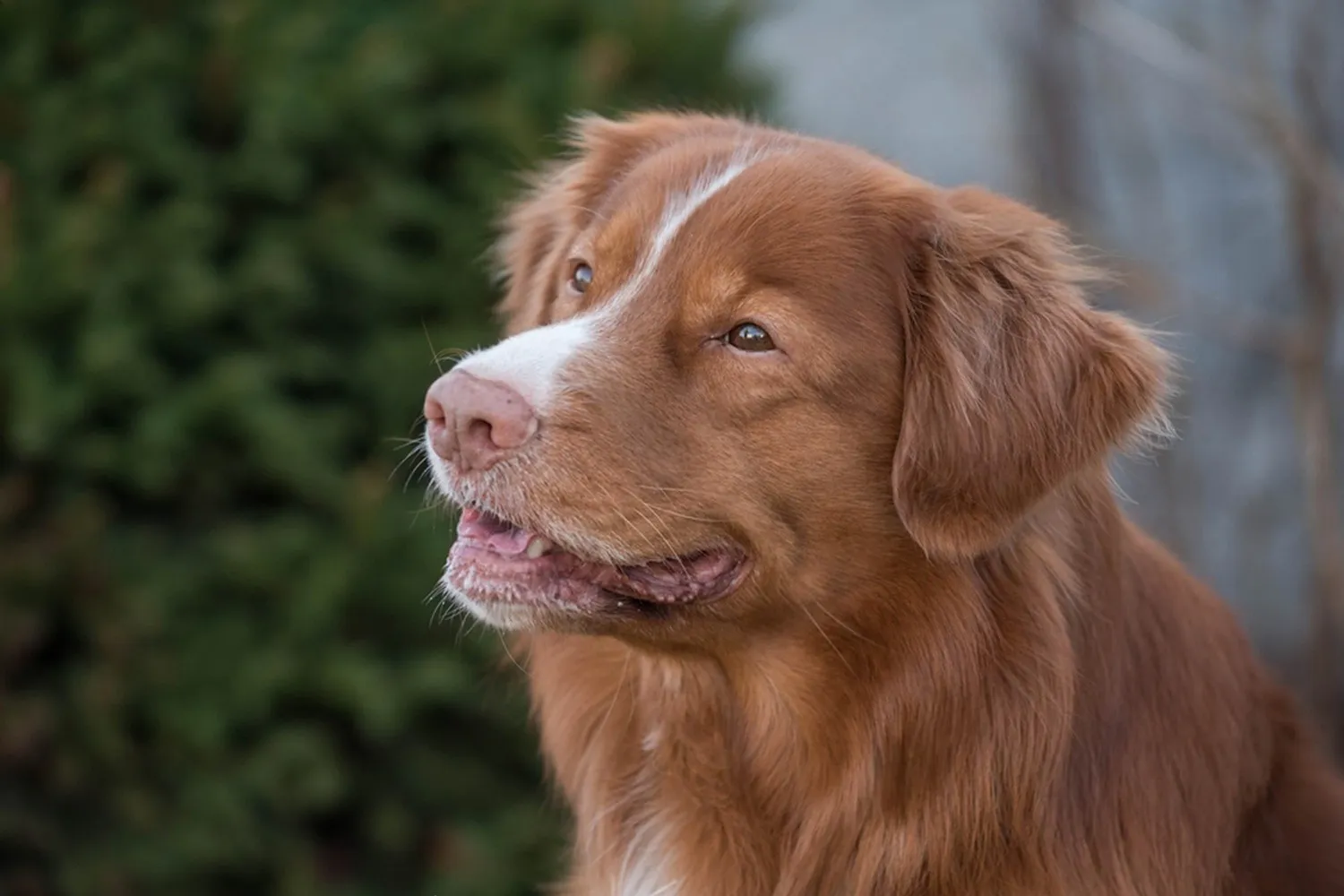
What Is the Lifespan of a Nova Scotia Duck Tolling Retriever?
According to the American Kennel Club, Tollers generally live for 12-14 years. In my experience, that window feels spot on plenty of Tollers are still zipping after tennis balls at 10 or 11, and a few lucky ones tiptoe into the mid teens. My friend’s Toller, Maple, celebrated her 14th birthday with a goofy grin and a salmon flavored “cake.” Like any breed, genetics and lifestyle make a difference, but you can expect a good, full dozen years of laughter, muddy paws, and that trademark Toller grin.
If you want to stack the deck for a long, happy life, think balance: daily exercise for the body and puzzles for the brain. Tollers are smart and driven, so mix fetch and swimming with scent games or short training sessions to keep them satisfied. I’m a big fan of keeping them lean extra pounds are hard on those agile joints. Regular vet checkups, solid dental care, and a high-quality diet go a long way. As they approach their senior years (often around 8 or 9), I start dialing back the high impact sprints and swap in more swims and gentle hikes. A cozy bed, a bit of joint support if your vet recommends it, and slightly shorter, more frequent outings can help them stay comfortable. With a little planning and a lot of love, those 12-14 years are wonderfully rich ones.
How Much Should a Nova Scotia Duck Tolling Retriever Eat?
Tollers are little red athletes with big appetites for action, so they do best on a high-quality, complete and balanced dog food. When I brought my Toller home, my vet walked me through labels and had me stick to brands that follow WSAVA recommendations and carry the AAFCO “complete and balanced” statement. That’s been a solid compass for me ever since. I also avoid boutique diets like raw or grain free my vet cautioned me about infection risks and potential heart issues, so I don’t take chances with a dog who loves to run as much as mine does.
As for how much to feed, most Tollers settle into two meals a day once they’re past puppyhood. The exact amount depends on your dog’s size, metabolism, and activity level. I usually start with the feeding chart on the bag, then adjust based on body condition ribs easy to feel but not see, and a nice waist from above. A measuring cup (or even a small kitchen scale) keeps portions consistent, and I do little seasonal tweaks; my Toller burns more calories during our fall hike marathons than in rainy weeks. If your pup inhales food like mine, a slow feeder or puzzle bowl turns mealtime into a brain game and helps prevent gulping.
Treats are great, especially for training, but keep them in moderation and count them as part of the daily intake. I pre portion a small treat pouch each morning so I don’t get carried away during obedience sessions. Using part of their kibble as rewards works too. Skip table scraps besides being unhealthy, they’re fast track tickets to a champion beggar. And don’t forget water; Tollers play hard and drink hard. I keep a fresh bowl at home and a collapsible one in the car for post park slurps. If you’re ever unsure about portions or switching foods, check in with your vet or a canine nutritionist they’ll help you tailor the plan to your dog’s needs.
Nova Scotia Duck Tolling Retriever FAQs
I get these questions about Tollers all the time here are the straight answers, with a few hard earned tips from life with these fox red dynamos.
Are Nova Scotia Duck Tolling Retrievers rare?
Yes, this is a rare breed. Expect a waitlist and be prepared to travel or wait several months for the right puppy. Breed clubs are a fantastic resource for reputable breeders and even rescue contacts. When you chat with breeders, ask about health testing (hips, eyes, and genetic panels are standard), meet an adult Toller if you can, and be wary of anyone who can “ship tomorrow.” I once waited nearly nine months for a puppy, and it was worth every minute good breeders match temperament to your lifestyle, which makes the early months so much smoother.
Are Nova Scotia Duck Tolling Retrievers ideal for first time dog owners?
They can be, absolutely. Tollers are curious, upbeat companions who love being part of daily life, even if you’ve never owned a dog before. The key is energy and consistency. Plan on meaningful exercise and training every day play fetch, do a couple of short training sessions, add a puzzle toy, and you’ll have a happy camper. My neighbor’s first dog was a Toller named Maple; puppy classes, a solid routine, and lots of socialization turned her into the friendliest coffee shop regular in town. Their gentle nature also makes them wonderful with children. Raise a child alongside a Toller and you’ll likely have a built in best friend and a lifetime of muddy, happy memories. As with any breed, teach kids to be respectful and always supervise those early interactions.
Are Nova Scotia Duck Tolling Retrievers hypoallergenic dogs?
No, Tollers are not hypoallergenic. They have a double coat and do shed, especially seasonally. If allergies are a concern, spend time with a Toller before committing; everyone’s sensitivities are different. Regular brushing, a good vacuum with a HEPA filter, and keeping bedding clean can make a big difference.
Do Nova Scotia Duck Tolling Retrievers smell bad?
Not by default. Like many longer coated dogs, they can give off that classic “wet dog” smell when they’ve been swimming or caught in the rain. With regular grooming and washing, it shouldn’t be an issue. I keep absorbent towels by the door, rinse after lake days, and dry thoroughly ears included. A quick brush helps distribute natural oils, and washing their bedding keeps any lingering odors at bay. I learned the hard way after one soggy hiking trip: a towel in the car is worth its weight in gold.
Disclaimer:
This article is for informational purposes only and doesn’t replace professional veterinary or training advice. Always consult a certified vet or dog trainer for guidance specific to your pup.

